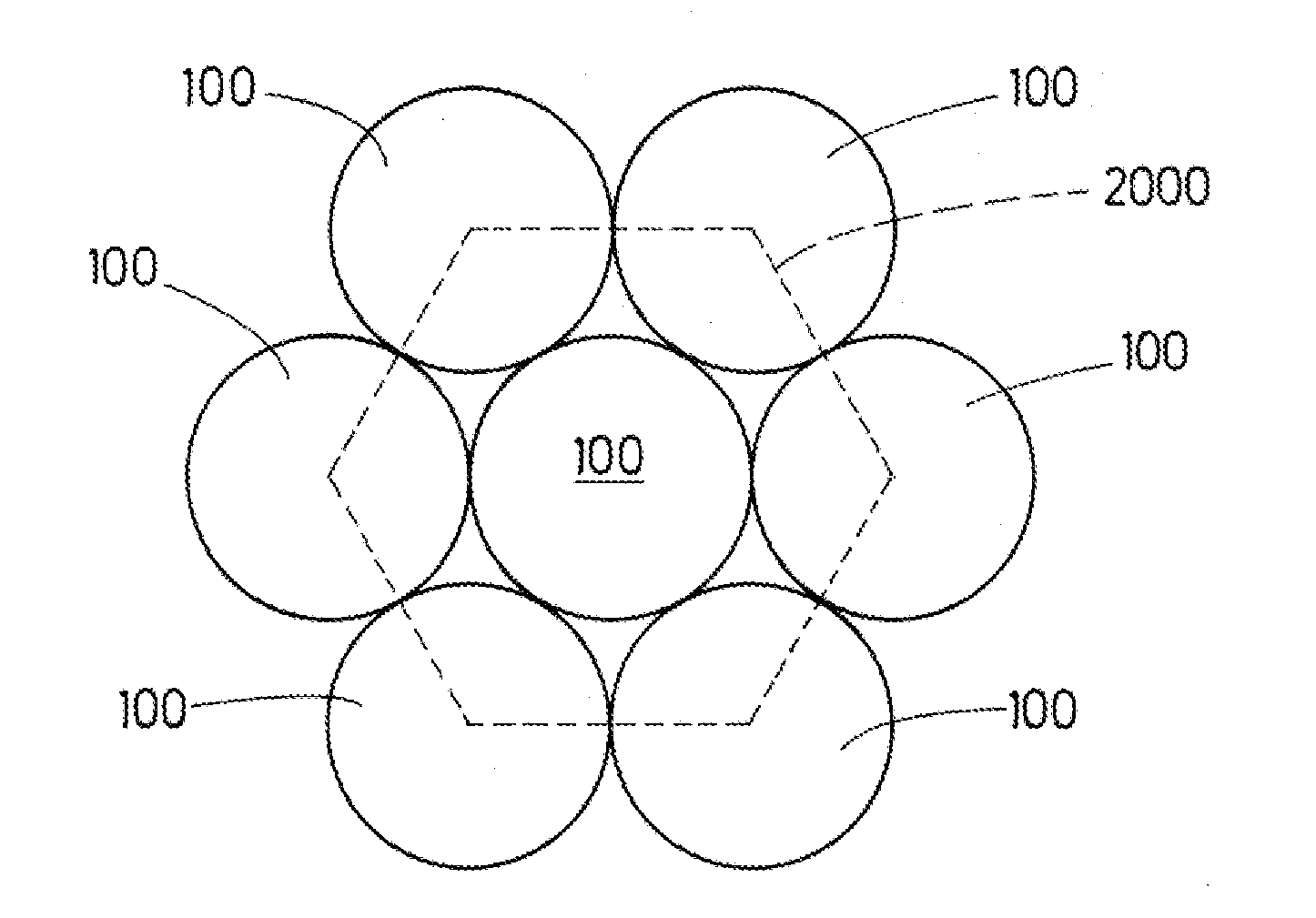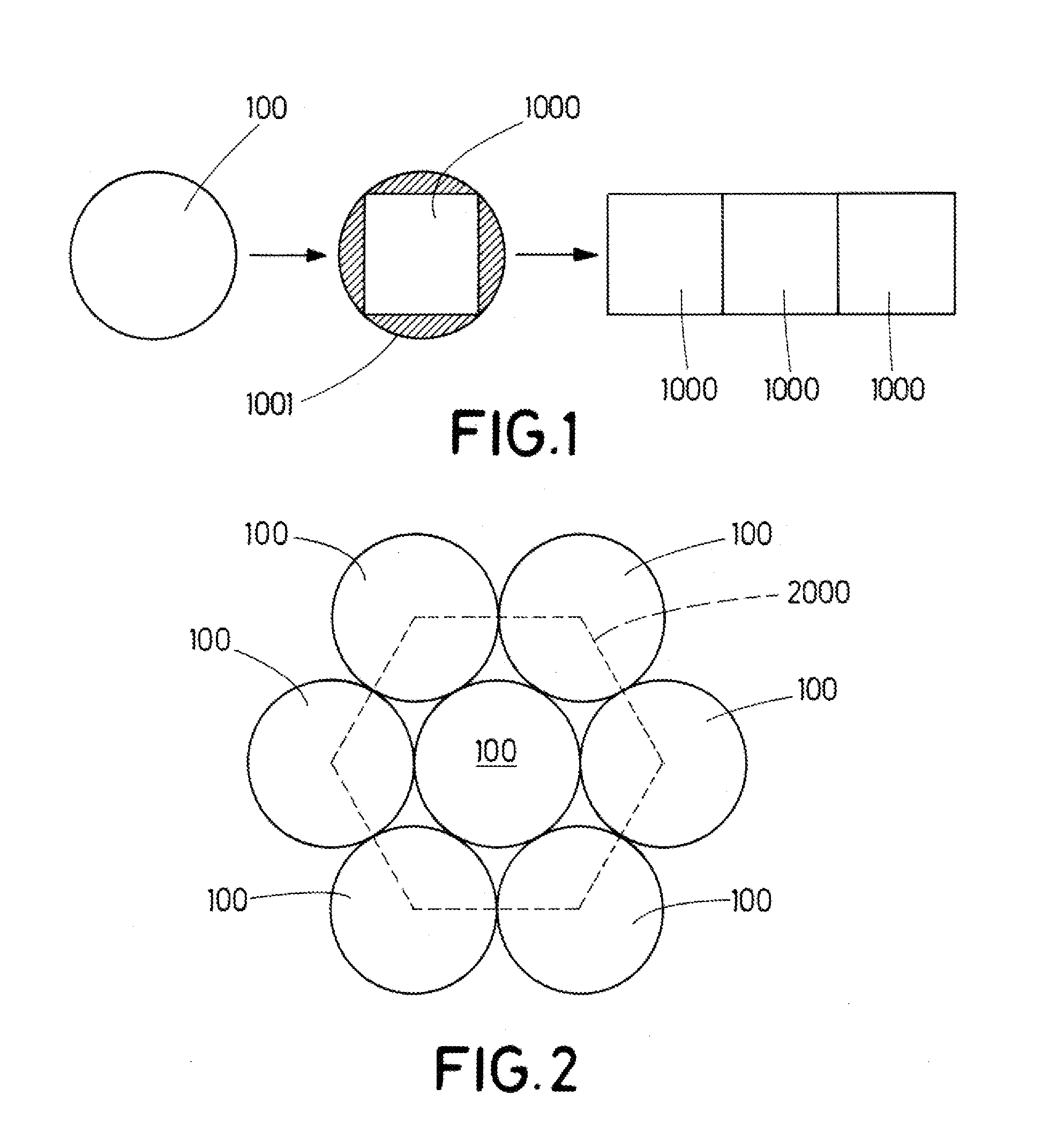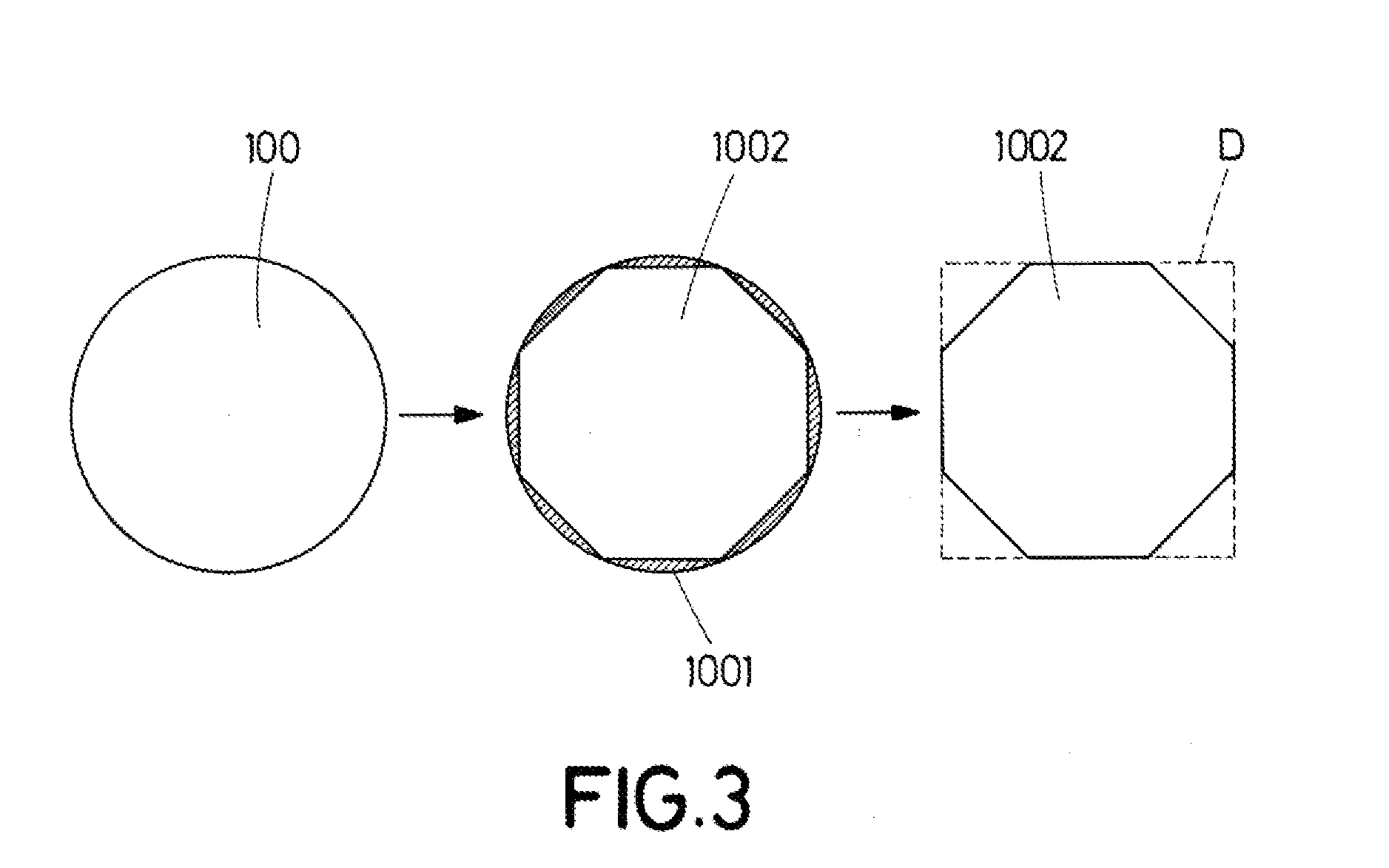Assemblies of solar cells with curved edges
a solar cell and assembly technology, applied in the field of discrete solar cells, can solve the problems of increasing the overall cost of the photovoltaic array or panel, inefficient use of the surface on which the solar cell is mounted, and inefficient use of the available space, so as to maximize the packing factor of the solar cell assembly, increase the packing factor, and maximize the packing factor
- Summary
- Abstract
- Description
- Claims
- Application Information
AI Technical Summary
Benefits of technology
Problems solved by technology
Method used
Image
Examples
Embodiment Construction
[0039]FIG. 4 shows how a substantially circular solar cell wafer 400 with a straight edge portion 401 can be provided with a further straight edge portion 405 by cropping it opposite to the first straight edge portion 401, removing a piece of wafer material 405a.
[0040]In the next step, the wafer is divided into two solar cells 410 and 411, by cutting the wafer in accordance with its diameter, in parallel with the straight edges 401 and 405. Thereby, two substantially identical solar cells 410 and 411 are obtained. Solar cell 410 comprises two parallel straight edges 401 and 402, one of which is longer than the other. The two straight edges 401 and 402 are separated from each other by two curved edges 403 and 404, each corresponding to an arc of the circular edge portion of the original wafer 400. In other embodiments, the wafer can be cut in other ways. It is clear that the surface area of each solar cell 410 and 411 is less than 50% of the surface area of the circle corresponding ...
PUM
 Login to View More
Login to View More Abstract
Description
Claims
Application Information
 Login to View More
Login to View More - R&D
- Intellectual Property
- Life Sciences
- Materials
- Tech Scout
- Unparalleled Data Quality
- Higher Quality Content
- 60% Fewer Hallucinations
Browse by: Latest US Patents, China's latest patents, Technical Efficacy Thesaurus, Application Domain, Technology Topic, Popular Technical Reports.
© 2025 PatSnap. All rights reserved.Legal|Privacy policy|Modern Slavery Act Transparency Statement|Sitemap|About US| Contact US: help@patsnap.com



